Identifying your cat’s breed can be a fascinating journey for any cat lover. With over 70 officially recognized cat breeds by The International Cat Association, and countless mixes, pinpointing your feline friend’s lineage can seem like a delightful mystery. While breeders and pet stores often provide breed information, adopting a cat from a shelter or finding a stray often leaves you with a beautiful enigma. Even if you suspect your cat is purebred, variations within breeds can make visual identification challenging. This guide is designed to help you navigate the clues and characteristics that can reveal your cat’s breed, without immediately resorting to genetic testing.
While detailing every trait of every breed is beyond the scope of a single guide, by focusing on key categories, we can narrow down the possibilities. If you’ve ever wondered “What Breed Is My Cat?”, this guide will walk you through observing your cat’s unique features and using them to start your breed discovery journey.
How to Determine Your Cat’s Breed
To begin unraveling your cat’s breed, become an observer of your feline companion. Pay close attention to their physical attributes, temperament, and any unique quirks. By systematically considering these aspects, you can piece together clues about your cat’s ancestry.
Size and Weight
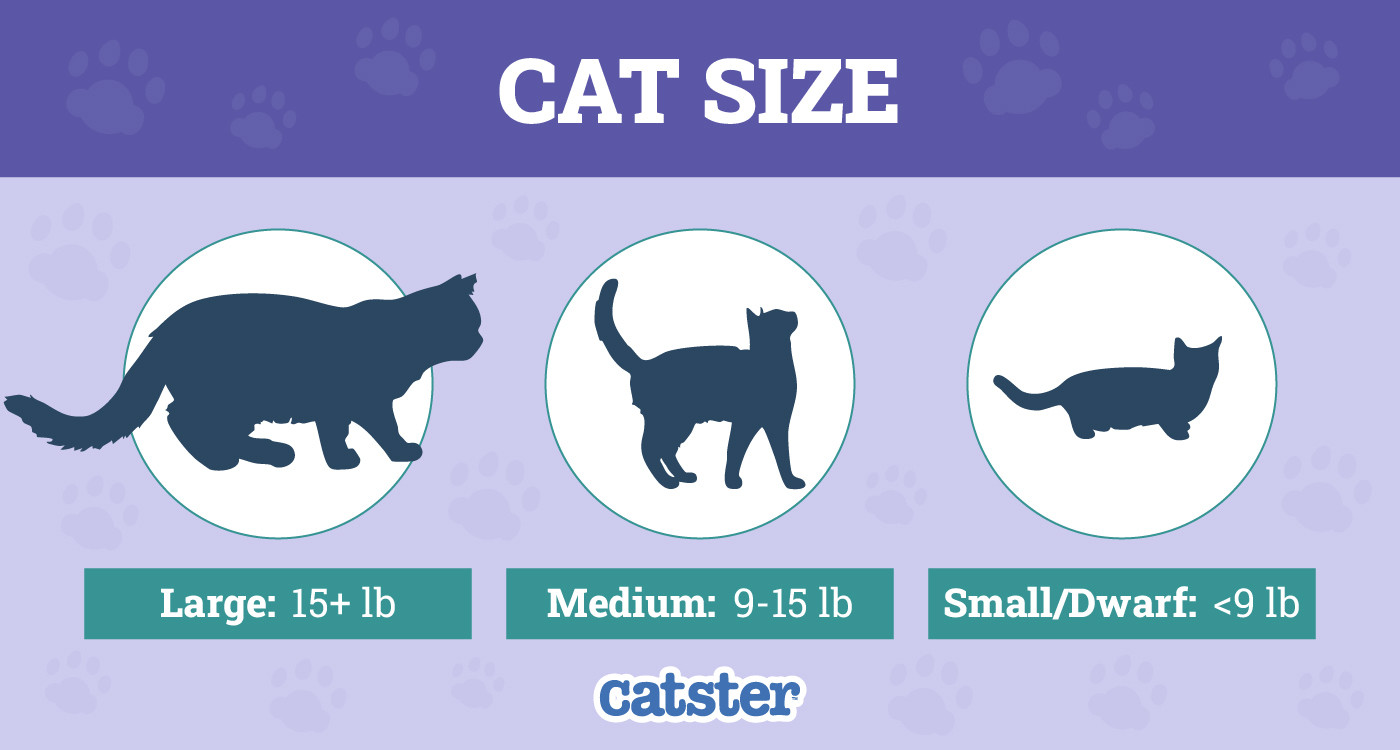 Comparison of cat sizes
Comparison of cat sizes
Cats exhibit a remarkable range in size and weight. From petite dwarf breeds weighing as little as 4 pounds to majestic giants like the Maine Coon, often exceeding 25 pounds, size is a significant indicator. Each breed generally falls within a defined size category, making weight and body size a valuable first step in breed identification.
1. Large Cat Breeds
 Norwegian forest cat standing in the snow
Norwegian forest cat standing in the snow
Cats tipping the scales at over 15 pounds are typically considered large breeds. Some can reach even greater weights, occasionally exceeding 30 pounds. Beyond weight, large breeds are characterized by their substantial length and height. They often stand over 8 inches tall, with some reaching up to 16 inches. Their body length can range from around 30 inches to a record-breaking 47.2 inches. If your cat fits these dimensions, you’re likely dealing with a large breed. Due to the limited number of breeds that attain this size, identification becomes more manageable.
Large cat breeds often include:
- Maine Coon
- Norwegian Forest Cat
- Ragdoll
- Siberian
- Ragamuffin
2. Medium-Sized Cat Breeds
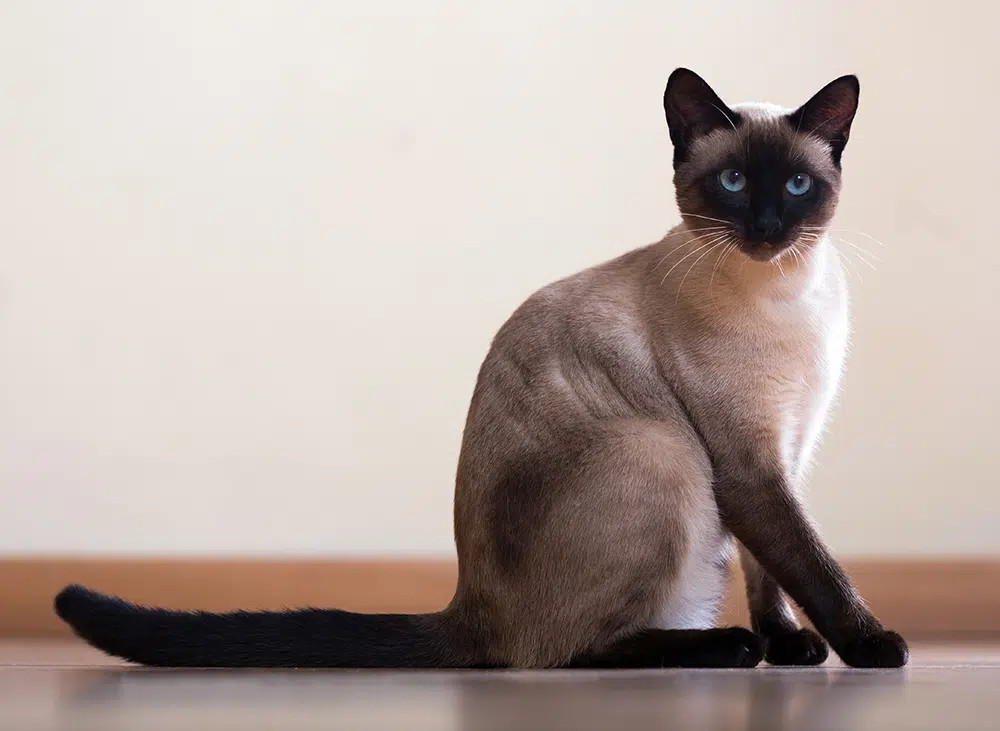 Siamese cat sitting on the floor indoor
Siamese cat sitting on the floor indoor
The majority of cat breeds fall into the medium-sized category. This is the most populous group, so size alone won’t definitively pinpoint the breed. However, it’s still a relevant factor when combined with other characteristics. Medium-sized cats typically weigh between 9 and 12 pounds. Heavier cats are likely large breeds, while lighter ones may be smaller or dwarf breeds.
Examples of medium cat breeds:
- American Shorthair
- British Shorthair
- Siamese
- Russian Blue
- Burmese
3. Small or Dwarf Cat Breeds
 Calico munchkin cat
Calico munchkin cat
If your fully grown cat weighs less than 9 pounds and has a distinctly small stature, you probably have a small or dwarf breed. These smaller felines are generally easier to identify as there are fewer dwarf breeds. Munchkins are perhaps the most recognized dwarf breed, and many others share Munchkin lineage.
Small or dwarf cat breeds include:
- Munchkin
- Singapura
- Cornish Rex
- Devon Rex
- American Curl (can be smaller)
Face Shape
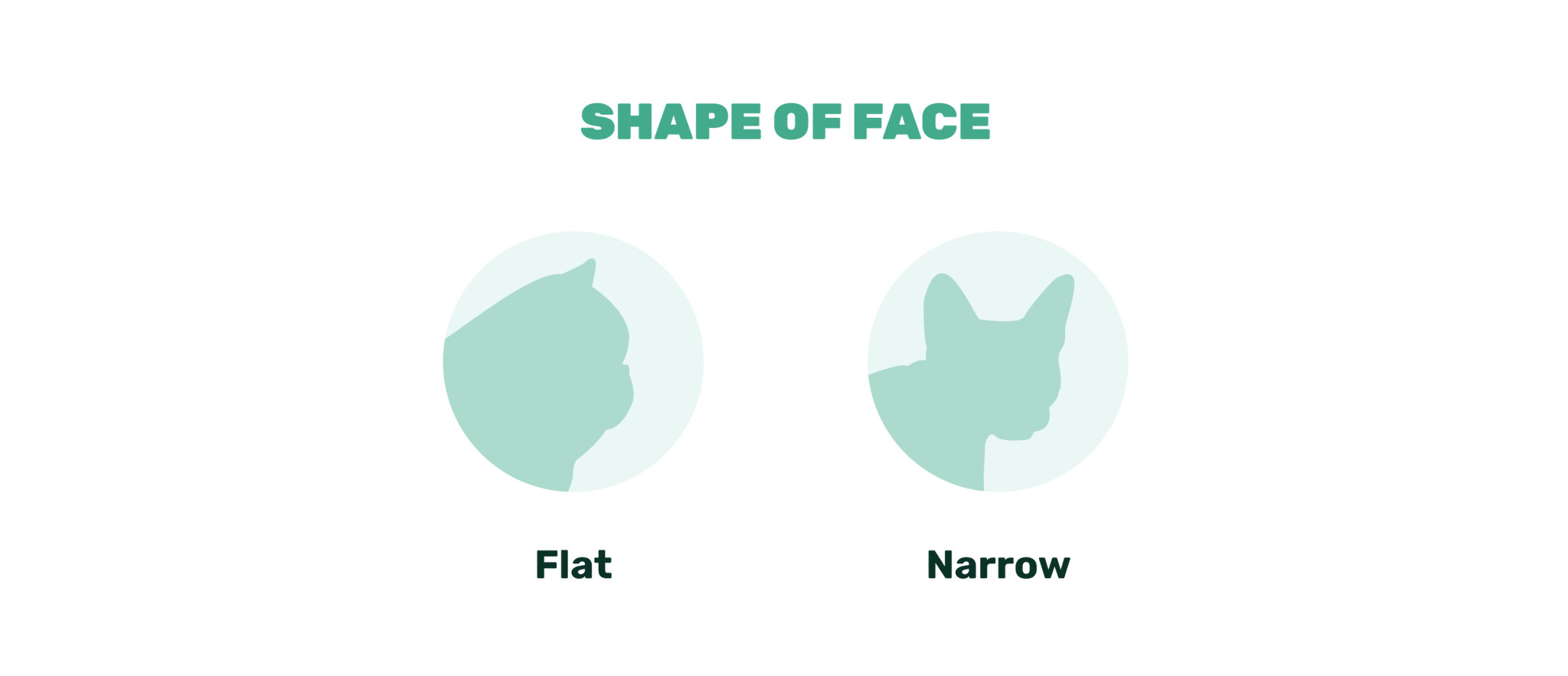 Cat face shape chart
Cat face shape chart
While facial features can vary within breeds, certain distinct face shapes can significantly narrow down breed possibilities. Specific shapes can be strongly associated with particular breeds.
1. Round and Flat-Faced (Brachycephalic) Cat Breeds
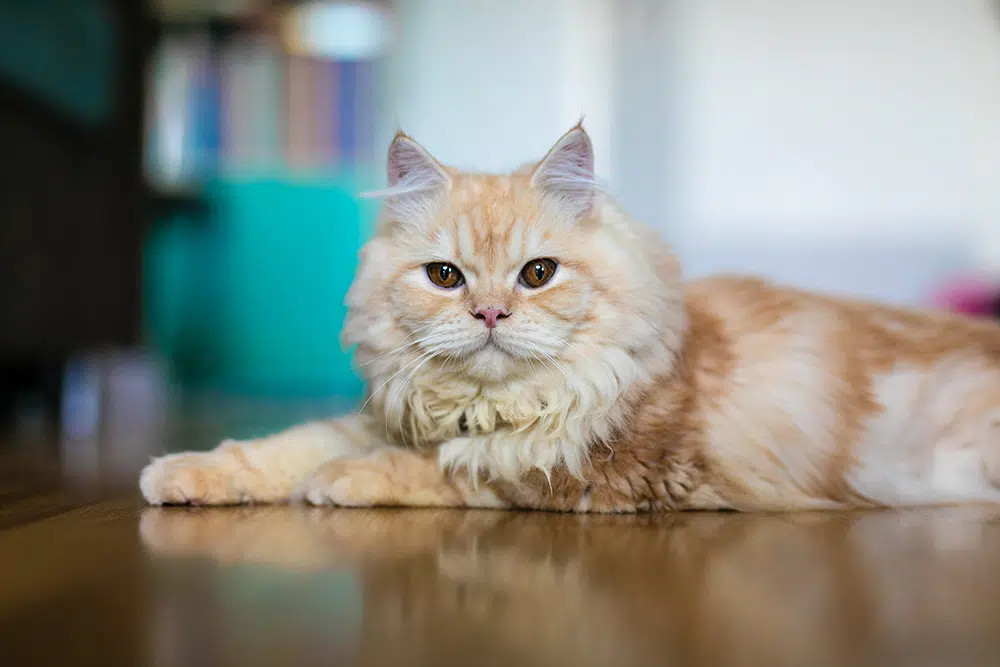 Ginger Persian cat lying on the floor
Ginger Persian cat lying on the floor
Some breeds exhibit a flattened facial appearance, almost as if pushed inwards. These are known as brachycephalic breeds, characterized by shorter skulls compared to other cats. In breeds like Persians, this feature is a defining and desirable trait.
However, brachycephalic breeds are prone to certain health issues due to their facial structure, including:
- Birthing difficulties
- Vision problems
- Dental issues
- Respiratory infections
- Breathing difficulties
Fortunately, flat-faced breeds are relatively few, making breed identification easier if your cat possesses this feature.
Round or flat-faced cat breeds:
- Persian
- Himalayan
- Exotic Shorthair
2. Narrow-Faced Cat Breeds
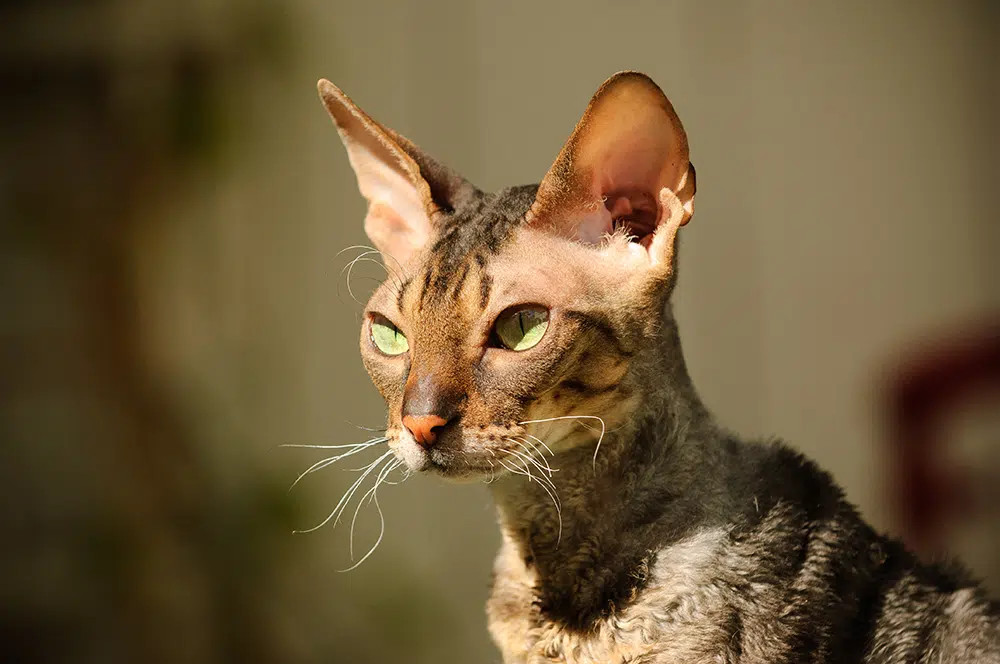 Close up Cornish Rex cat
Close up Cornish Rex cat
In contrast to flat-faced cats, narrow-faced breeds have a more triangular or wedge-shaped face. These breeds are even less common than flat-faced types.
Narrow faced cat breeds:
- Siamese
- Oriental Shorthair
- Cornish Rex
- Devon Rex
- Abyssinian
Ears
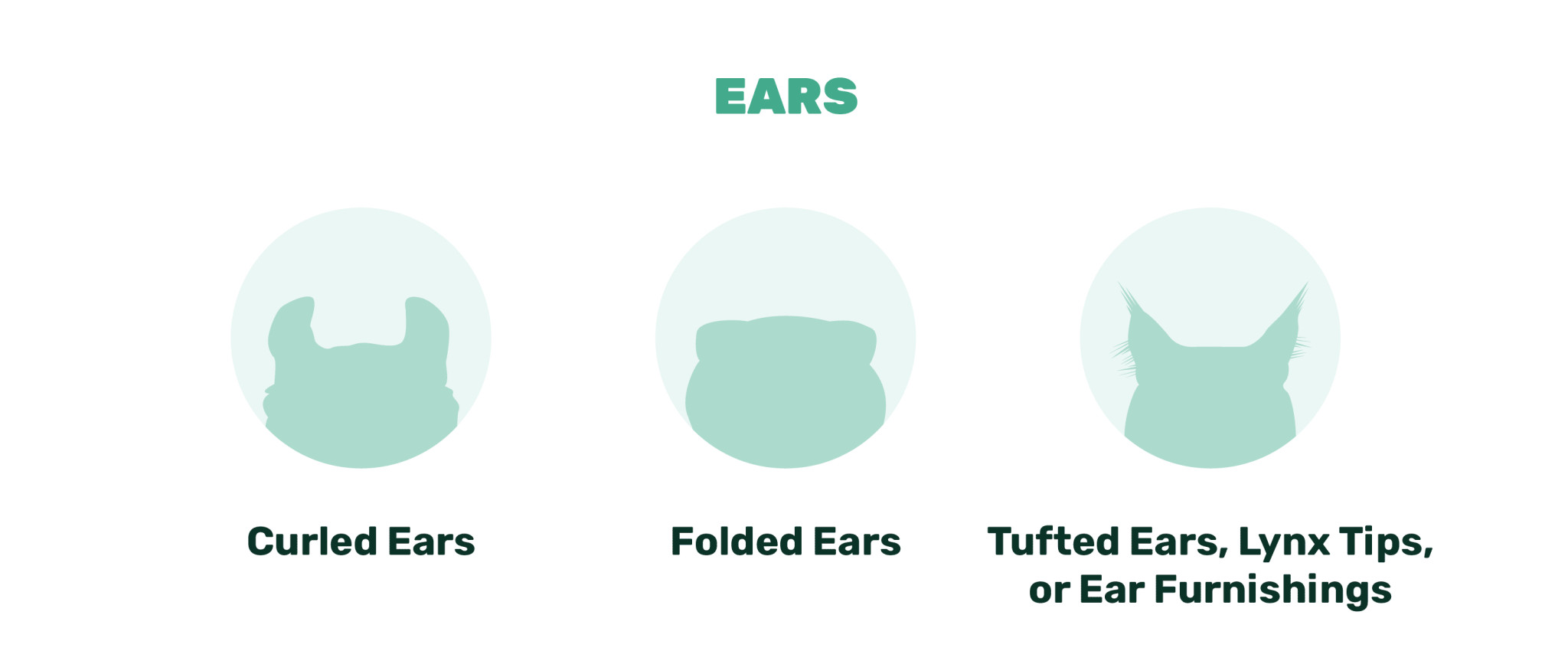 Cat ear shapes
Cat ear shapes
The shape of your cat’s ears can be a strong indicator of breed, especially if they exhibit unusual shapes like curled or folded ears. These unique ear shapes often result from genetic mutations and have become signature traits for certain breeds.
1. Curled Ear Cat Breeds
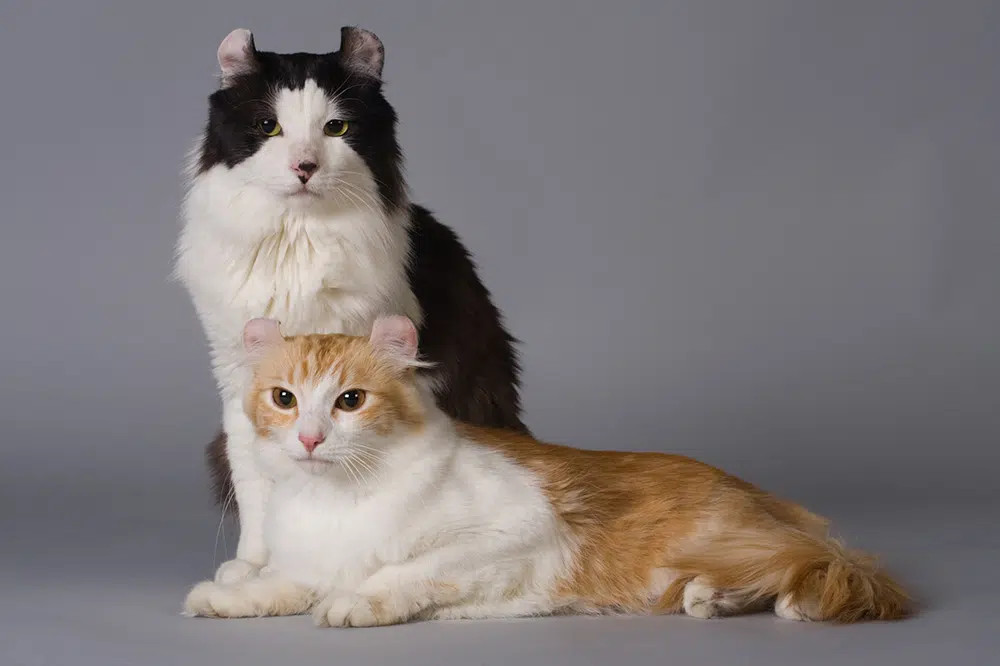 Two American Curl cats in the studio
Two American Curl cats in the studio
Curled ears arch backward, resembling small horns. This distinctive shape is a hallmark of specific breeds.
Cat breeds with curled ears:
- American Curl
2. Folded Ear Cat Breeds
 Red Scottish Fold cat
Red Scottish Fold cat
Folded ears, while sometimes grouped with curled ears, are distinct. Unlike curled ears, folded ears are due to a genetic mutation that can lead to health problems, such as arthritis, deformities, and deafness, as the gene affects cartilage throughout the body.
Cat breeds with folded ears:
- Scottish Fold
3. Tufted Ears, Lynx Tips, or Ear Furnishings
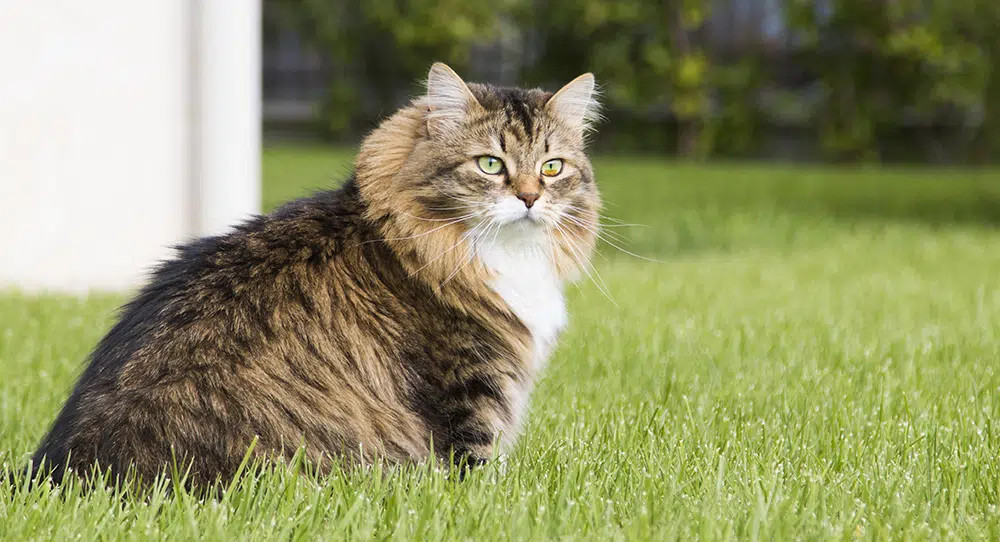 Brown tabby Siberian cat sitting on the grass
Brown tabby Siberian cat sitting on the grass
Ear tufts, or lynx tips, are the fur tufts at the tips of the ears, believed to help keep debris out and direct sound inwards. Ear furnishings are similar hairs growing inside the ears. Several breeds exhibit these ear adornments, which can help narrow down breed possibilities.
Cat breeds with ear tufts:
- Maine Coon
- Norwegian Forest Cat
- Siberian
- Turkish Van
- American Bobtail
Eyes
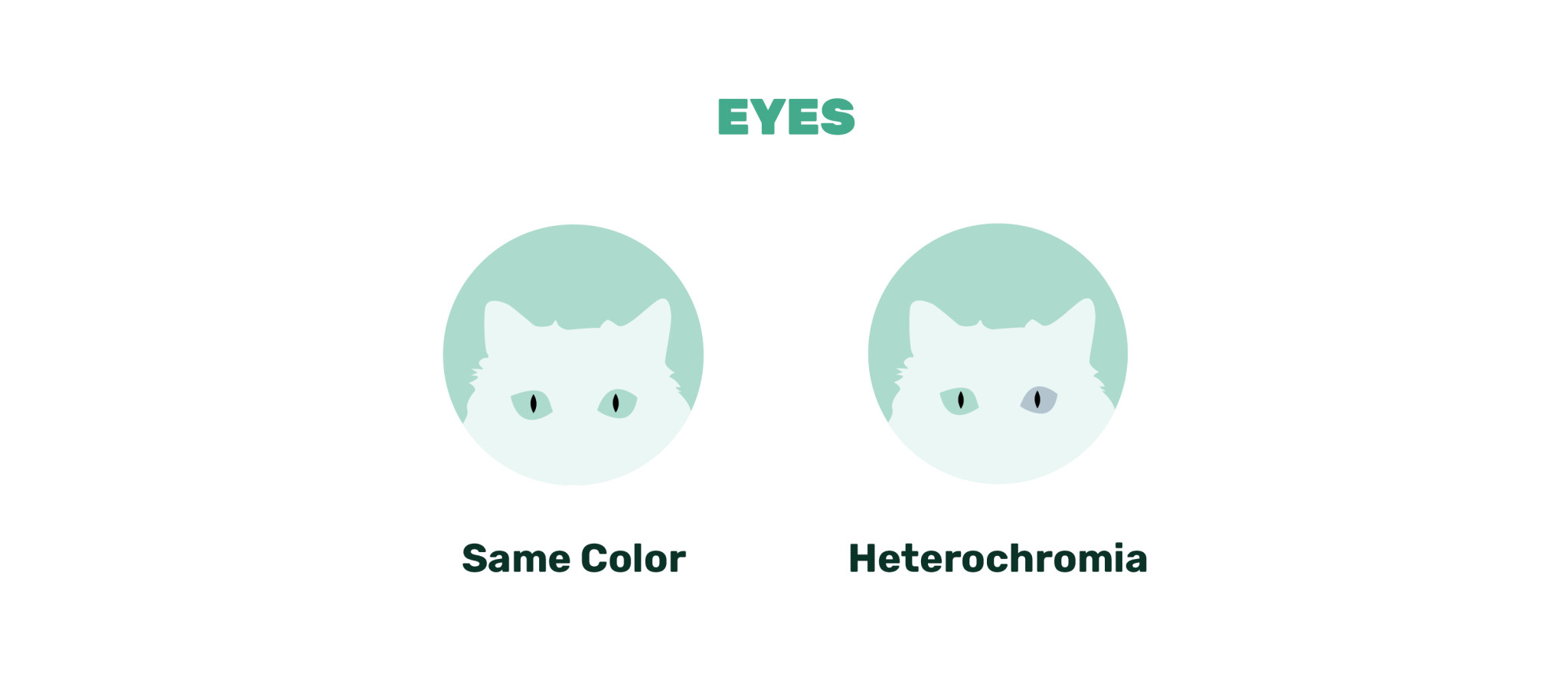 Cat eye colors
Cat eye colors
Cats display a spectrum of eye colors, which can offer clues for breed identification. Common cat eye colors include amber, hazel, gold, green, and blue.
While same-colored eyes might not be breed-specific, heterochromia, or different colored eyes, is a genetic anomaly linked to white dominant and white spotting genes, occurring in certain breeds.
Cat breeds known for rare eye colors or heterochromia:
- Turkish Van
- Turkish Angora
- Sphynx
- Persian
- Oriental Shorthair
Coat
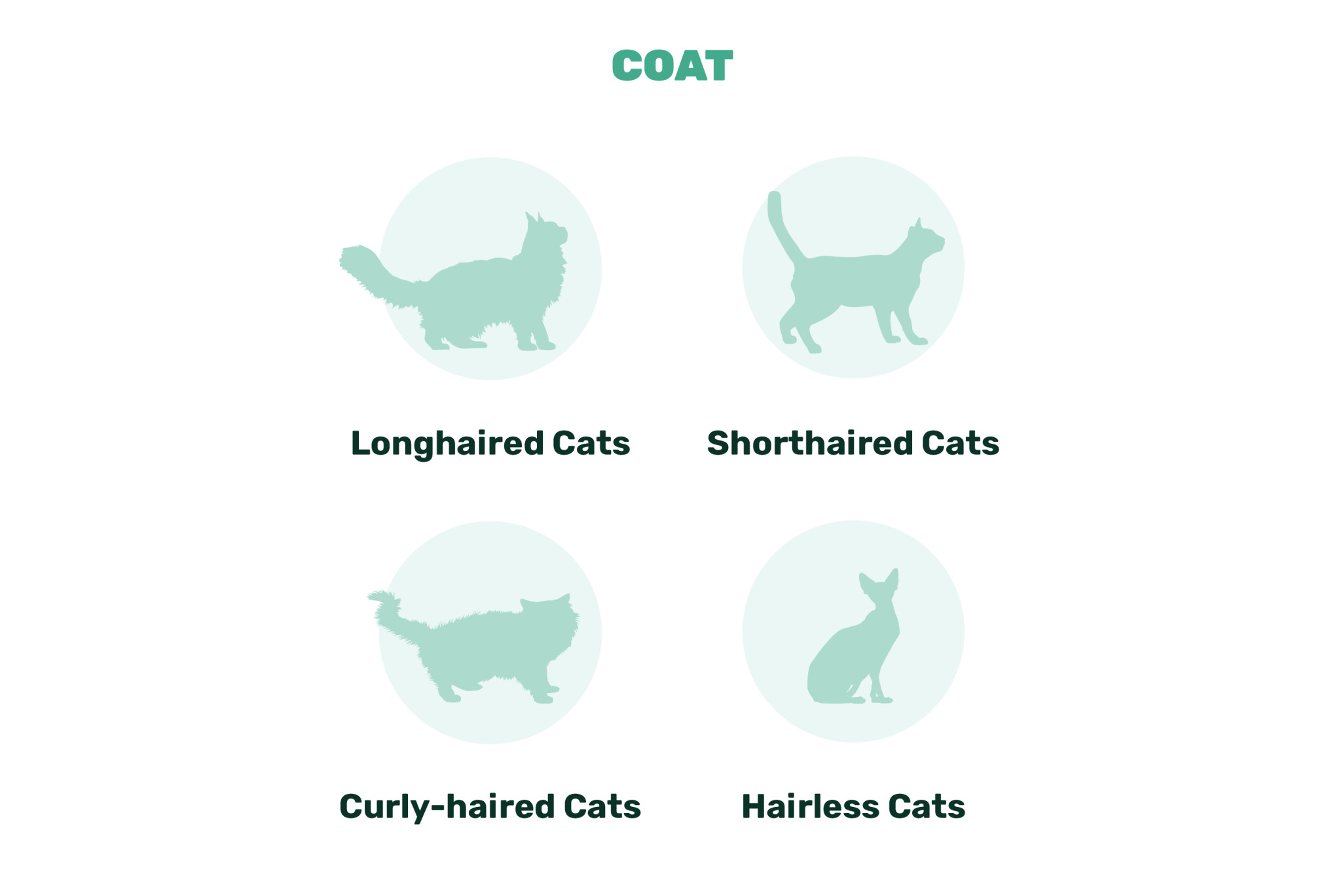 Cat coat types
Cat coat types
A cat’s coat type provides another significant clue to its breed. Coats vary widely – long, short, curly, or even hairless. Many breeds are defined by their specific coat type, making it a valuable identification tool.
1. Longhaired Cat Breeds
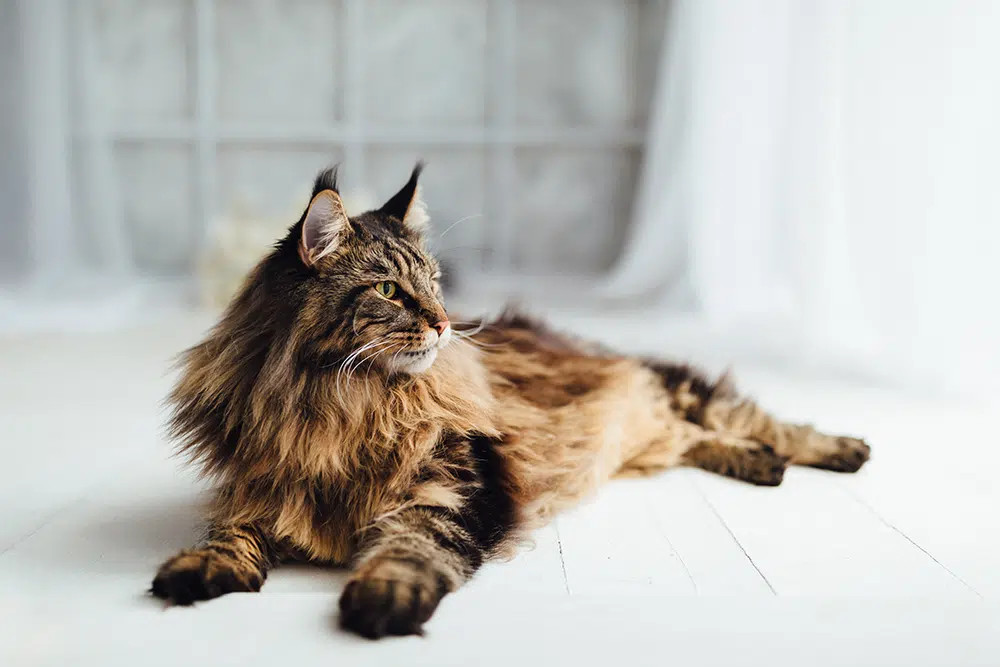 Smoked longhaired Maine Coon cat lying indoor
Smoked longhaired Maine Coon cat lying indoor
Longhaired cats have luxurious, flowing coats, often making them appear larger. These breeds have thick fur and typically require more grooming due to shedding.
Long-haired cat breeds include:
- Maine Coon
- Persian
- Ragdoll
- Norwegian Forest Cat
- Himalayan
- Turkish Angora
- Birman
- Ragamuffin
2. Shorthaired Cat Breeds
Shorthaired cats possess fur that is short and close to their body. They are generally lower maintenance than longhaired cats, requiring less grooming.
Short-haired cat breeds are numerous and include:
- American Shorthair
- British Shorthair
- Siamese
- Russian Blue
- Burmese
- Abyssinian
- Bengal
- Manx
- Sphynx
3. Curly-Haired Cat Breeds
Curly-haired cats have distinctive wavy or curly coats. These coats can be long or short and require careful grooming to prevent tangles.
Curly-haired cat breeds:
- Cornish Rex
- Devon Rex
- LaPerm
- Selkirk Rex
4. Hairless Cat Breeds
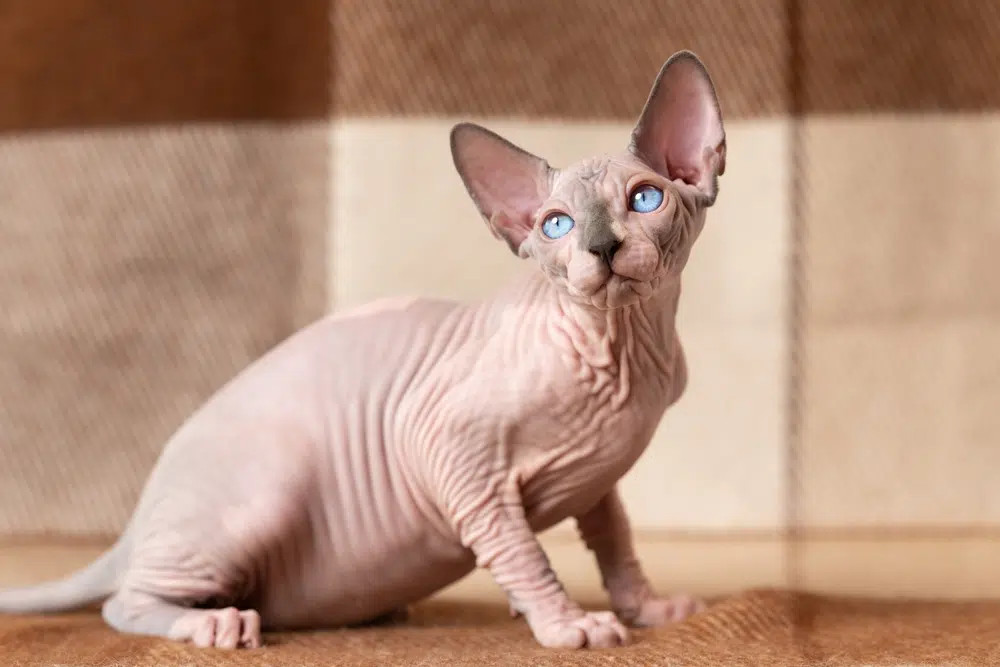 Sphynx cat sitting on a blanket and looking away
Sphynx cat sitting on a blanket and looking away
Hairless cats are instantly recognizable by their lack of fur. Breeds like the Sphynx are popular among allergy sufferers. The number of hairless breeds is limited, making identification easier.
Hairless cat breeds:
- Sphynx
- Peterbald
- Donskoy
Colors, Patterns, and Markings
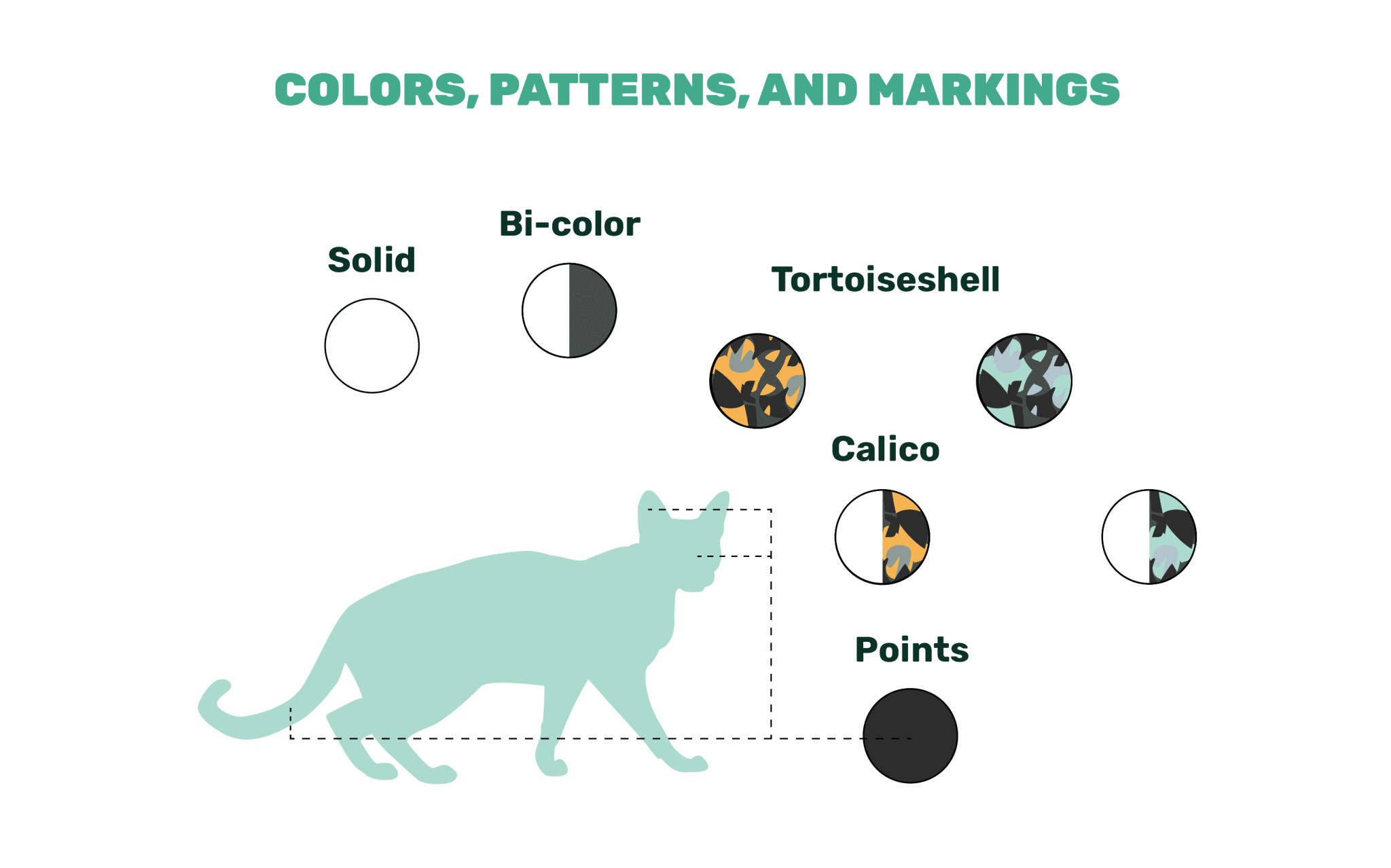 Cat colors patterns markings chart
Cat colors patterns markings chart
While coat color alone isn’t definitive, certain colors, patterns, and markings are more common in specific breeds, adding another layer of clues.
1. Solid Color Cats
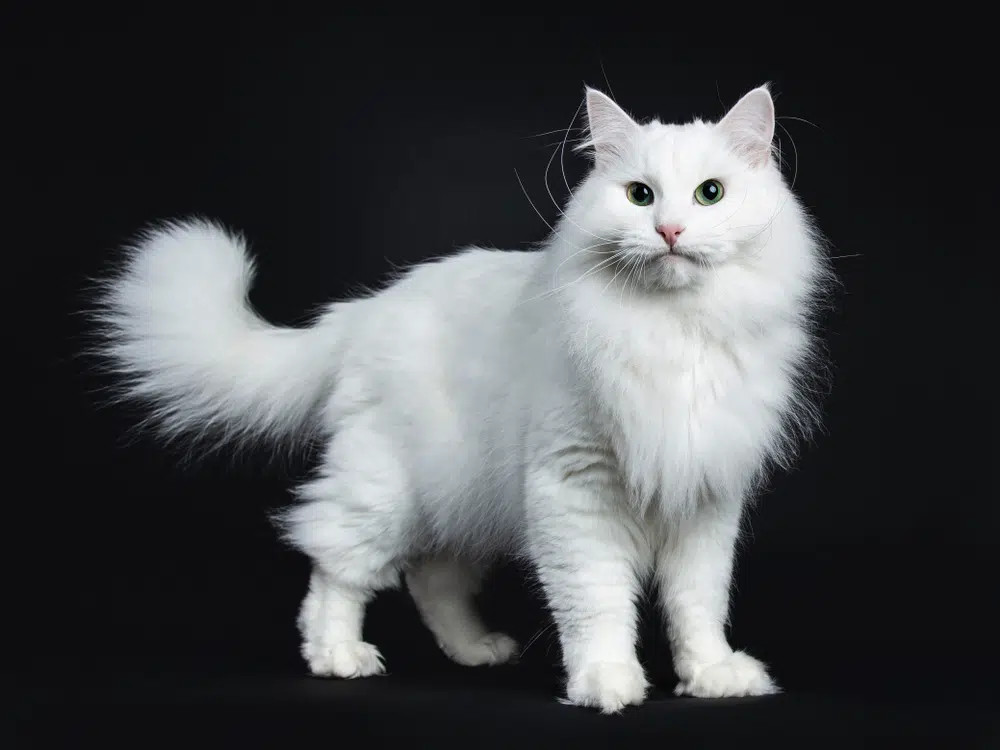 Pure white Siberian cat
Pure white Siberian cat
Solid-colored cats have a single, uniform color across their coat, such as black, white, brown, or red.
2. Bi-Color Cats
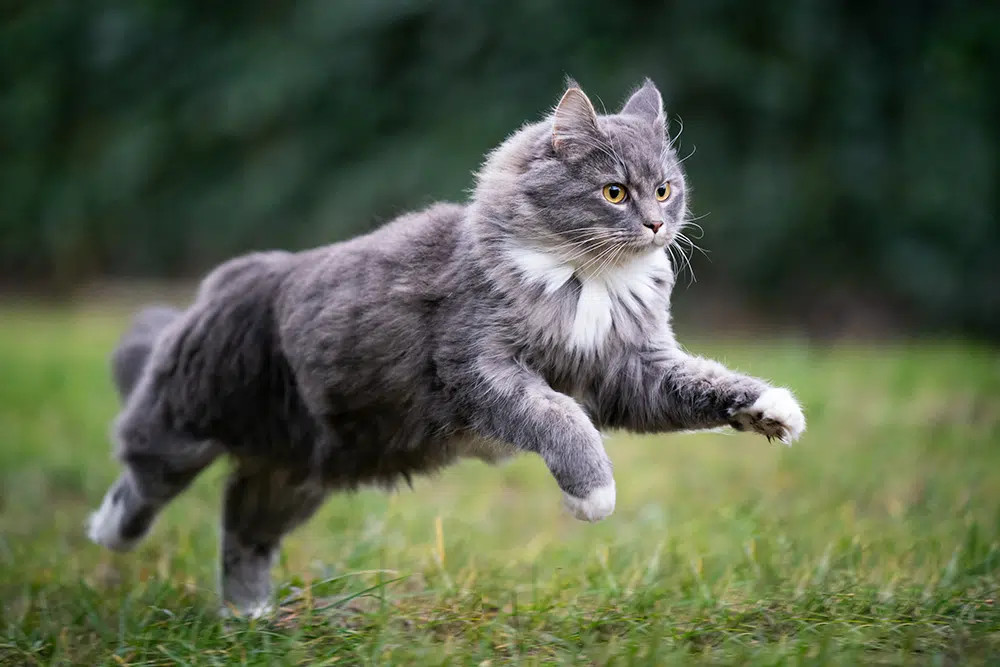 Blue tabby Maine Coon cat running fast
Blue tabby Maine Coon cat running fast
Bi-colored cats, also called piebald, have two colors, with white as the secondary color. The white can range from minimal markings to covering most of the coat.
Many breeds can exhibit bi-color coats, such as:
- Maine Coon
- American Shorthair
- British Shorthair
- Persian
3. Tortoiseshell Cats
 Tortoiseshell Norwegian Forest cat sitting
Tortoiseshell Norwegian Forest cat sitting
Tortoiseshell cats have a base color intermixed with patches of a secondary color, but without white. Common tortoiseshell combinations include black and orange, but can also feature colors like blue, chocolate, red, yellow, and cream.
4. Calico Cats
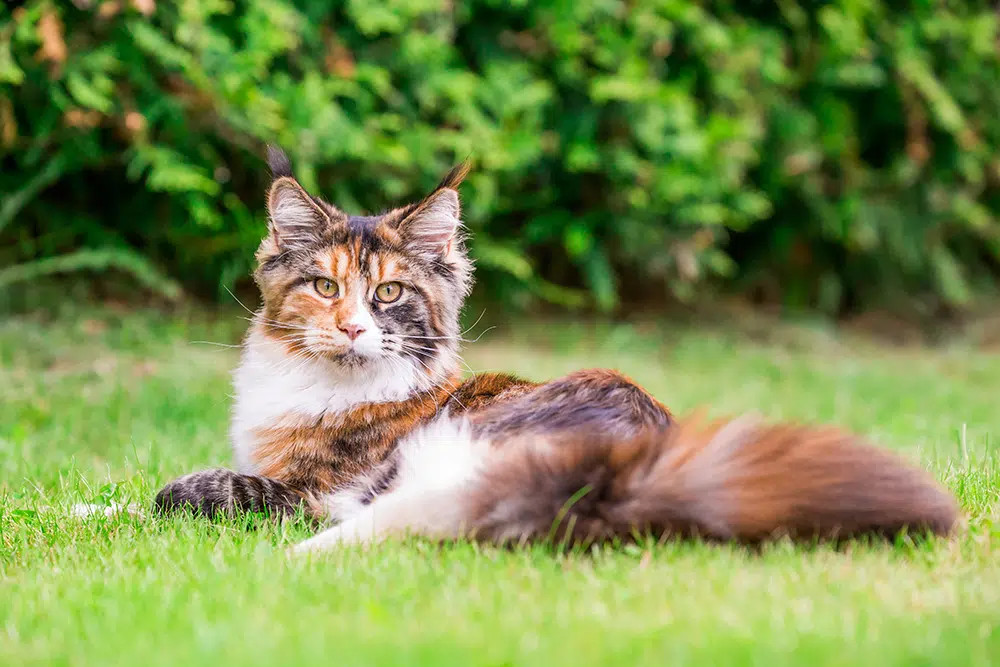 Calico Maine Coon cat lying on the grass
Calico Maine Coon cat lying on the grass
Calico cats are tri-colored, featuring white along with two other colors. Almost exclusively female, male calico cats are rare and usually sterile.
5. Pointed Cats
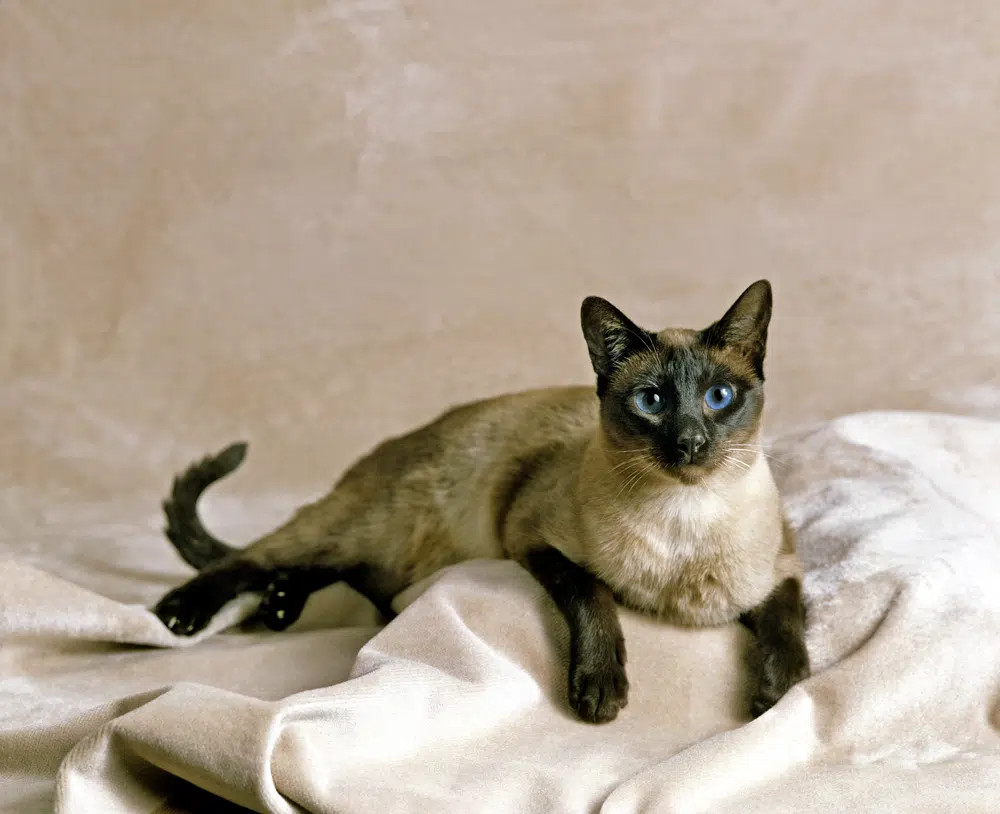 Seal point Siamese domestic cat
Seal point Siamese domestic cat
Pointed cats have darker coloration on their face, paws, ears, and tail, contrasting with a lighter body coat. Points can come in various colors, as can the base coat.
Color-pointed cat breeds:
- Siamese
- Himalayan
- Ragdoll
- Birman
Tail
 Cat tail types
Cat tail types
Tail variations are not extensive, but certain tail types can be a strong breed indicator.
1. Long Tails
Most cats have standard, long tails that don’t offer significant breed-specific information.
2. Short Tails
Short tails are a more distinctive feature, significantly narrowing breed possibilities. Often appearing cropped, these short tails are natural to certain breeds.
Short-tailed cat breeds:
- Manx
- American Bobtail
- Japanese Bobtail
- Kurilian Bobtail
Behavior
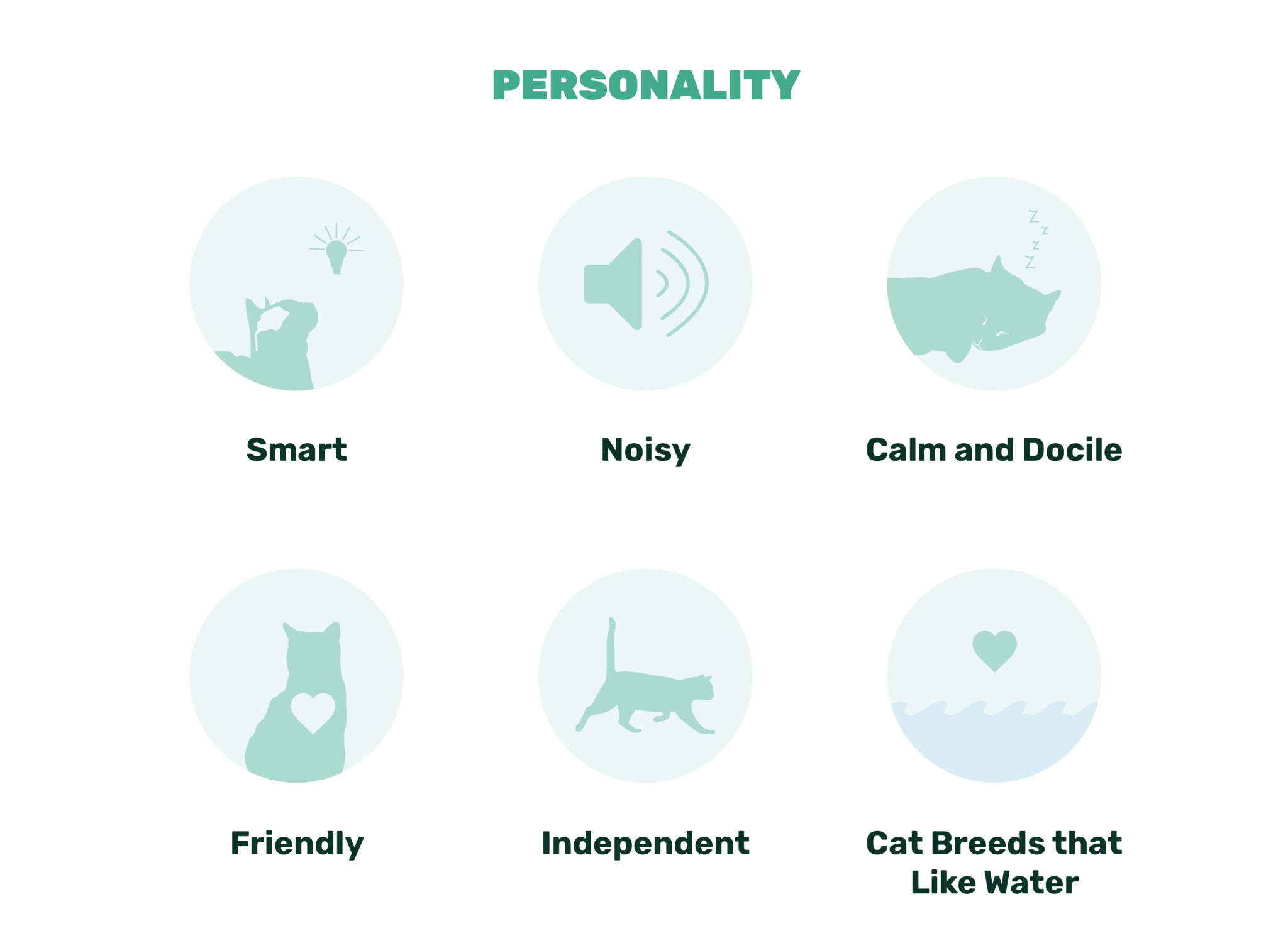 Cat personalities illustration
Cat personalities illustration
While individual personalities vary, some behavioral traits are more common in certain breeds. Observing your cat’s temperament can provide further clues.
1. Smart Cat Breeds
 Ginger Persian cat lying on the floor
Ginger Persian cat lying on the floor
Cats are generally intelligent, but some breeds are recognized for their exceptional smarts and trainability.
Intelligent cat breeds often include:
- Abyssinian
- Siamese
- Bengal
- Burmese
- Cornish Rex
- Scottish Fold
2. Noisy Cat Breeds
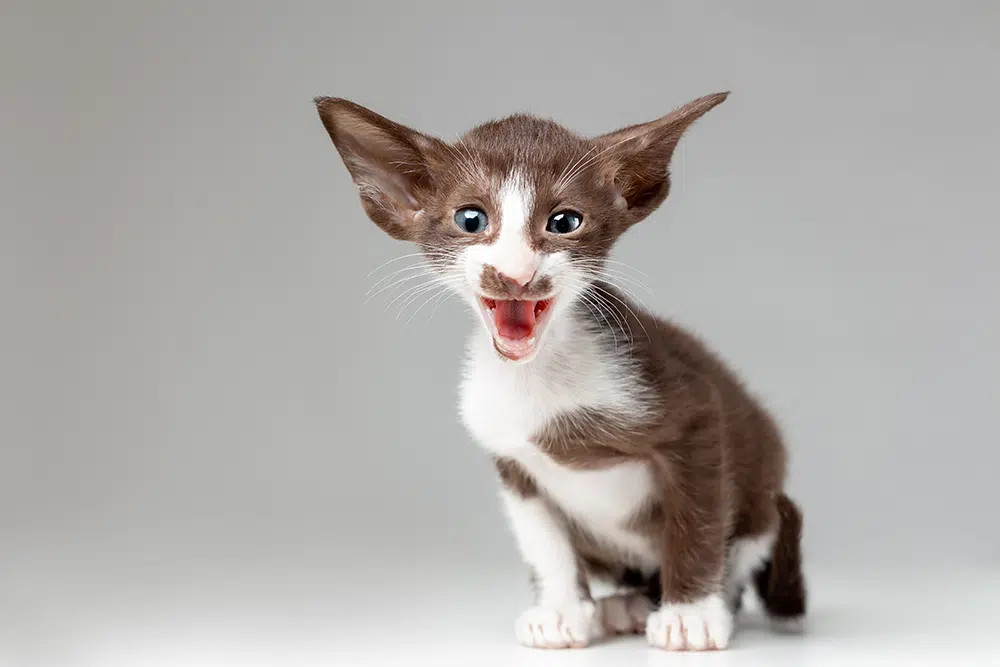 Bicolor oriental cat kitten
Bicolor oriental cat kitten
While many cats are quiet, some breeds are known for being particularly vocal, enjoying “conversations” with their owners.
Vocal cat breeds:
- Siamese
- Oriental Shorthair
- Burmese
- Sphynx
3. Calm and Docile Cat Breeds
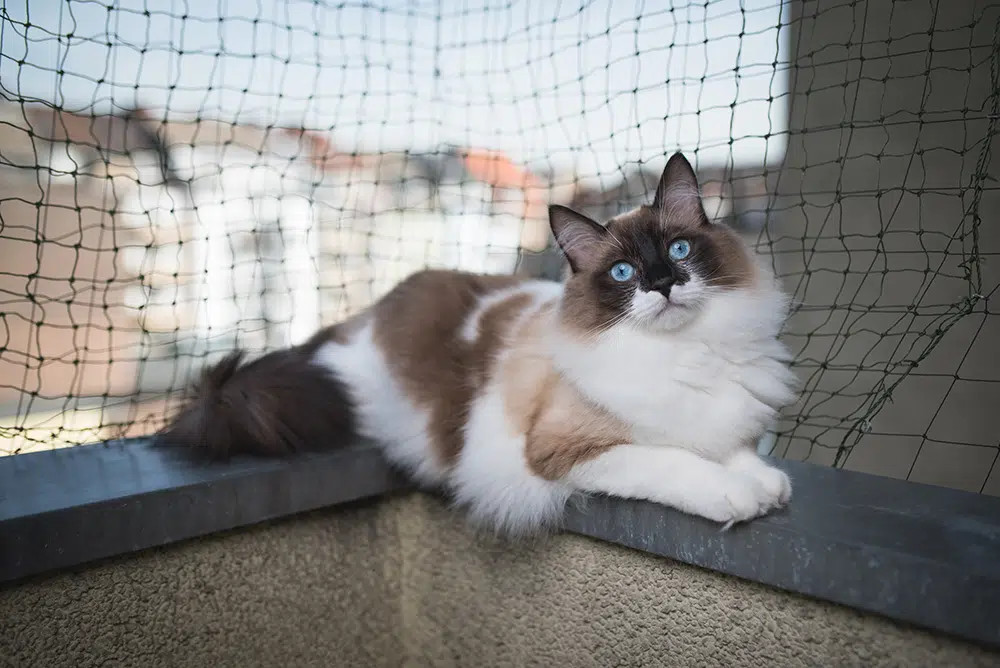 Ragdoll cat lying in the edge of the balcony corner
Ragdoll cat lying in the edge of the balcony corner
Many cats are energetic hunters, but some breeds are known for their calm, relaxed, and docile nature.
Docile cat breeds:
- Ragdoll
- Persian
- British Shorthair
- Scottish Fold
4. Friendly Cat Breeds
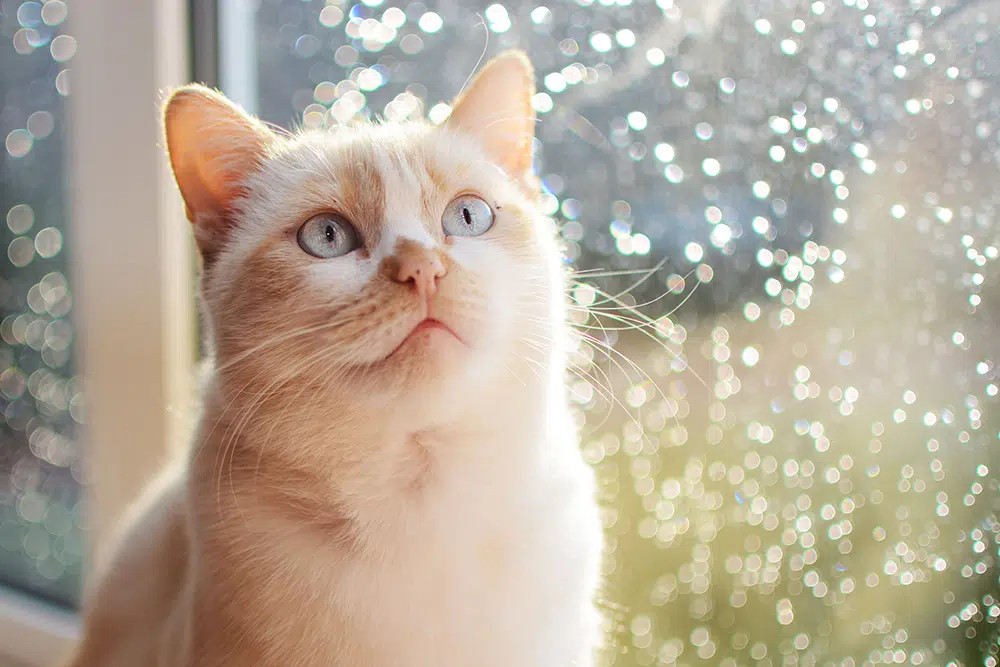 Close up Ragamuffin beside the window
Close up Ragamuffin beside the window
Despite the stereotype of aloof cats, some breeds are known for their friendly and outgoing personalities, readily seeking affection.
Friendly cat breeds:
- Ragdoll
- Ragamuffin
- Burmese
- Maine Coon
- Abyssinian
5. Independent Cat Breeds
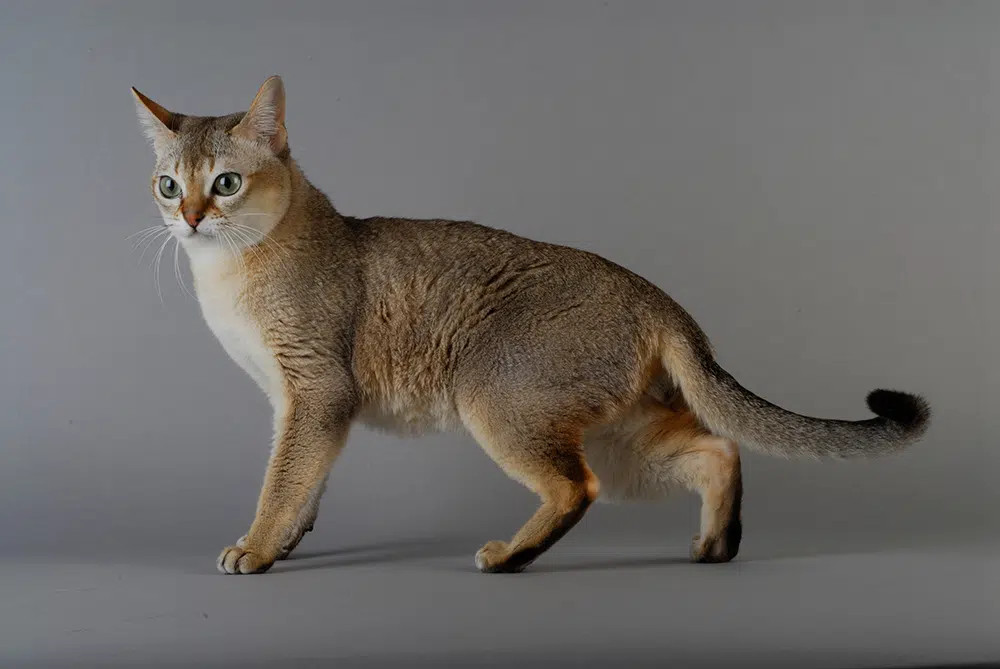 Singapura cat on grey background
Singapura cat on grey background
Some cats are more self-sufficient and independent, content with their own company and demanding attention only on their terms.
Independent cat breeds:
- Persian
- Russian Blue
- Singapura
- Abyssinian
6. Cat Breeds That Like Water
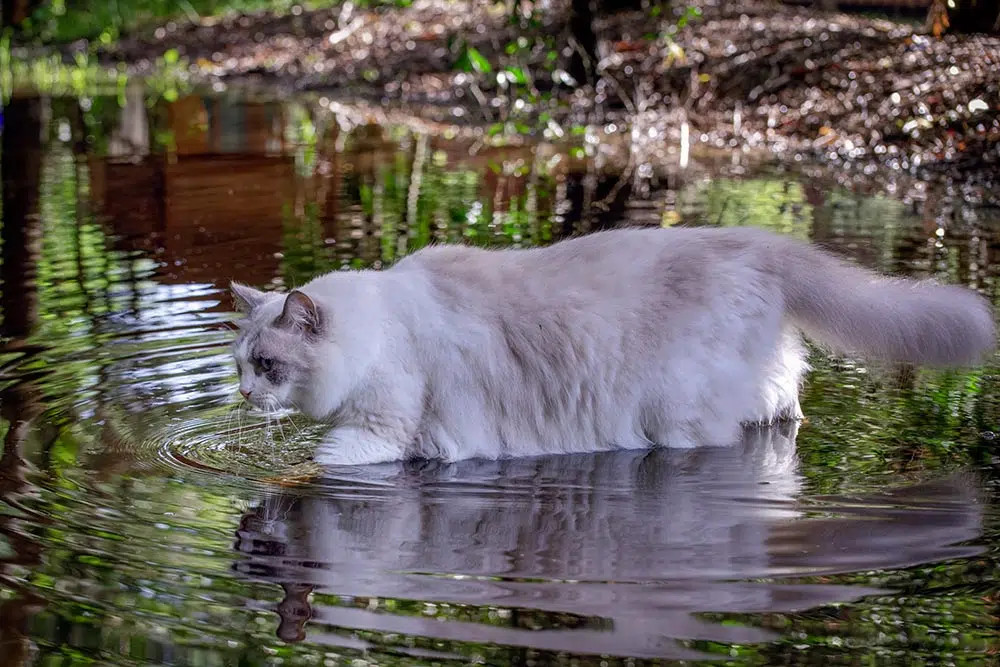 Ragdoll cat walking through water
Ragdoll cat walking through water
Contrary to the common aversion, a few breeds are known to be surprisingly drawn to water.
Water-loving cat breeds:
- Turkish Van
- Turkish Angora
- Maine Coon
- Bengal
So, What Breed Is My Cat?
 divider cat paw scratch oct 2024
divider cat paw scratch oct 2024
Determining your cat’s breed using these traits is a process of elimination and observation. You can employ a couple of methods to synthesize your findings.
Method 1: Trait-Based Search
List the characteristics your cat exhibits based on the categories discussed (size, coat, ears, behavior, etc.). Then, input these traits into a search engine like Google using a search query similar to:
Example Search Query: “cat breed calm large short fur tan pointed”
Method 2: Breed List Cross-Reference
Review the breed lists provided for each trait. If a particular breed appears consistently across multiple lists corresponding to your cat’s characteristics, it increases the likelihood of that breed being part of their lineage.
Remember, these methods may not yield a definitive answer, especially for mixed-breed cats. However, they will provide valuable direction and insights into your cat’s possible ancestry. If your cat is a mix, their lineage may encompass several breeds identified in your search results.
Genetic Testing to Identify Cat Breed
For definitive breed identification, particularly for mixed-breed cats, genetic testing is the most accurate method. A cat DNA test analyzes your cat’s genetic makeup, revealing the breeds present in their ancestry.
While visual traits can often suggest a purebred cat’s breed, mixed breeds present a greater challenge due to the blend of characteristics. Genetic testing overcomes this by directly examining your cat’s DNA.
Beyond breed information, cat DNA tests can also provide insights into potential health predispositions, allowing for proactive care. Consult your veterinarian for guidance on genetic testing options.
 Purebred vs Mixed Breed Cat side by side
Purebred vs Mixed Breed Cat side by side
Conclusion: Unveiling Your Cat’s Breed
With a vast number of cat breeds, identifying your cat’s breed can be an engaging puzzle. By carefully observing your cat’s physical and behavioral traits using this guide, you can gather significant clues and narrow down the possibilities. While these methods are often effective for single-breed cats, mixed breeds may require genetic testing for conclusive results. Whether you rely on observation or genetic analysis, the journey of discovering your cat’s breed enhances your understanding and appreciation of your feline companion.

